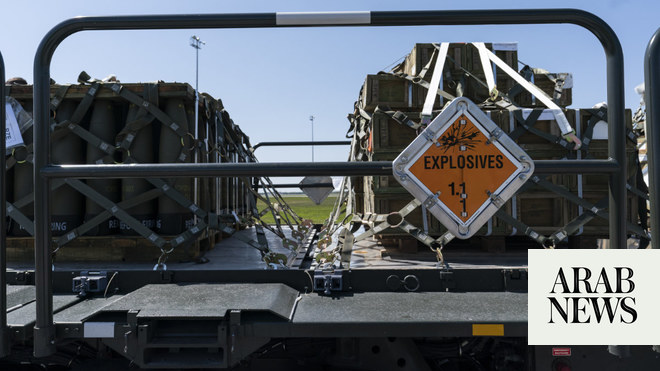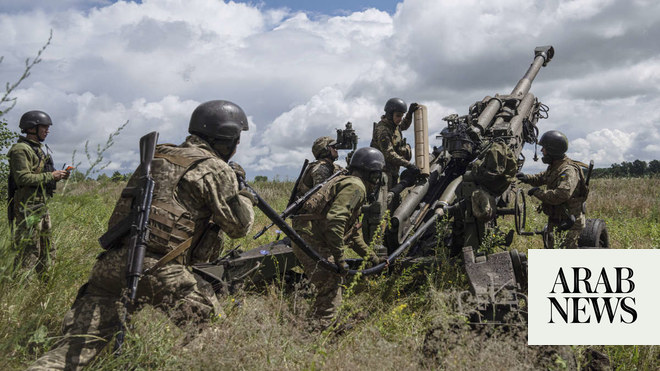
US officials have warned that Afghanistan’s government could fall in 90 days, with Kabul isolated in as little as a month, as the Taliban overran the central Sarposa prison in Kandahar, the country’s second largest city, releasing almost 1,000 prisoners.
The fall of Kandahar – sometimes called the capital of the south – would be a devastating blow for the Afghan government after a week in which the Taliban have swept up provincial capitals around the country in a lightning offensive.
The latest setback for Afghan government forces came as Joe Biden urged Afghan leaders to “fight for their nation” after rapid advances by the Taliban.
The White House spokesperson, Jen Psaki, repeated the administration line on Wednesday, saying: “They have what they need. What they need to determine is whether they have the political will to fight back, and if they have the ability to unite as leaders to fight back.”
She added: “We will continue to provide close air support. We’ll continue to resupply their forces with food and equipment, and pay all their salaries.”
Asked whether US air support for Afghan forces would stop on 31 August, the formal end to the US war in Afghanistan, she said: “I don’t have any update on that.” But she noted: “It’s a good question.”
With foreign embassies in Kabul, including the US embassy, discreetly accelerating evacuation planning in the event of the situation worsening, the Taliban’s succession of victories on the battlefield has caught out western capitals that have long sustained the Afghan government.
India announced on Wednesday that it was evacuating consular staff from the northern city of Mazar-i-Sharif, one of the last remaining cities in that region not under Taliban control.
Confirming the fall of the prison, an official in Kandahar told the Guardian: “The Taliban broke into Kandahar prison around evening, they now have control over it. They started their attack on the prison last night.
“There are still a few places in Kandahar city under government control but the Taliban are in Ahmad Wali Khan Square. I don’t exactly don’t know the number of released inmates. But it is a lot.”
“The prison is on eastern outskirts of the city,” said another official. “The Taliban attacked that and hundreds of inmates were released. As far as I know many of them were criminals as political detainees were mostly transferred to Kabul in recent days.”
A Taliban spokesperson said that during the fight for the prison Afghan security forces had surrendered. “Kandahar central prison was conquered this afternoon after long-time siege,” he said. “Hundreds of inmates were released. Security personnel at the prison surrendered and gave them their ammunition.”
While western analysts and policymakers were already dubious about the ability of the Afghan security forces to withstand a fully fledged Taliban offensive, many had assumed the government could hold out for at least six months.
Retired general Joseph Votel, a former commander of US Central Command, said: “I‘m not surprised that the Taliban is putting a lot of pressure on the Afghan forces, particularly in the wake of our departure, and of most of the coalition forces as well. What I am surprised about is how quickly they are moving and seem to be consolidating.”
But with the Taliban claiming daily new advances, even the timescale of 90 days appears optimistic as the Afghan government – which the US has backed at a cost of $1tn over 20 years – appears to be collapsing in the face of the offensive.
The Taliban now control 65% of Afghanistan, senior EU officials say, and they have taken, or threatened to take, 11 provincial capitals.
US defence and intelligence officials, quoted anonymously in several media outlets on Wednesday, said the new assessment of how long Kabul could stand was due to the rapid gains the Taliban had made.
“But this is not a foregone conclusion,” one official told Reuters, adding that the Afghan security forces could reverse the momentum by putting up more resistance.
The dire predictions came as Faizabad, the provincial capital of the northern Badakhshan province, fell hours after the Taliban’s capture on Tuesday of Pul-e-Khumri, capital of the northern province of Baghlan, where Afghan security forces retreated toward the Kelagi desert.
After the latest catastrophic news from the battlefield, an official suggested that the Afghan president, Ashraf Ghani, had replaced his army chief of staff.
“Afghan leaders have to come together,” Biden told reporters at the White House on Tuesday night, saying Afghan troops outnumbered the Taliban. “They’ve got to fight for themselves, fight for their nation.”
With the reported fall of Faizabad, the Taliban have captured most of the country’s biggest northern cities, with Mazar-i-Sharif and Maymana remaining outside their control. Taliban forces are already attacking Maymana and claim to have entered the city of Gardiz, provincial capital of Paktia province.
The Afghan government and military did not immediately respond to requests for comment on the latest military setbacks.
However, on Wednesday Ghani went to Mazar-i-Sharif to seek the support of two warlords there to push back against the Taliban advance. Hours before he arrived, pictures posted on official government social media accounts showed the notorious warlord Abdul Rashid Dostum boarding a plane in Kabul for Mazar along with a contingent of commandos. “I’m going to [the north] to defeat the enemy,” Dostum said.
The speed and consequence of the collapse of Afghan government forces was underlined in reports, initially in the Washington Post, quoting unnamed US officials, which raised the spectre of a complete collapse of the Afghan government.
“Everything is moving in the wrong direction,” one source told the paper.
Biden said he did not regret his decision to withdraw troops from the country, noting Washington had spent more than $1tn over 20 years and lost thousands of troops.
Ghani said he was seeking help from regional militias, with whom he has squabbled for years. He appealed to civilians to defend Afghanistan’s “democratic fabric”.
The loss of Afghanistan’s northern cities is doubly significant, as for years the north was Afghanistan’s most peaceful region, with only a minimal Taliban presence. The militants’ strategy appears to be to take the north, and border crossings in the north, west and south, then close in on Kabul.
The government’s tactic of withdrawing from hard-to-defend rural districts to focus on holding population centres appears to have backfired as the Taliban have moved quickly to surround cities.
The significance of the capture of Faizabad will not be lost on Afghans, as it was a city the Taliban could not capture during their rule in the 1990s when they had control of more than 90% of the country’s territory.
“The city has been surrounded by the Taliban for more than a month,” a senior official in the city said by phone. “In the past week they attacked the city twice. Last night they advanced from four directions and the city fell at 11 pm. They’ve overrun the city and all of Badakhshan province.”
A resident of the city said: “The situation is calm now but there were some clashes during the night. There are not many people on the streets, and many are hiding in their homes.”












